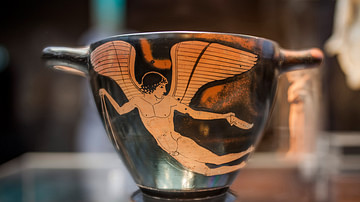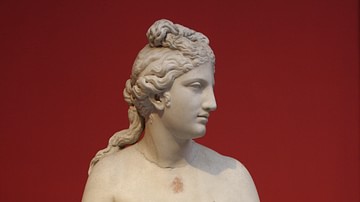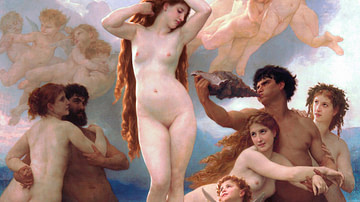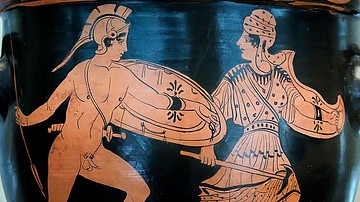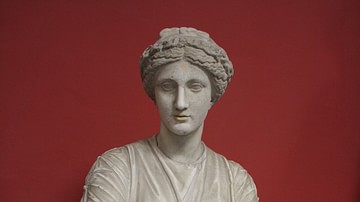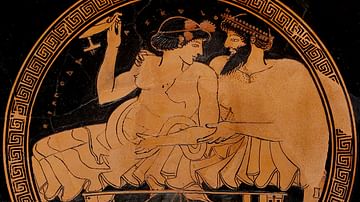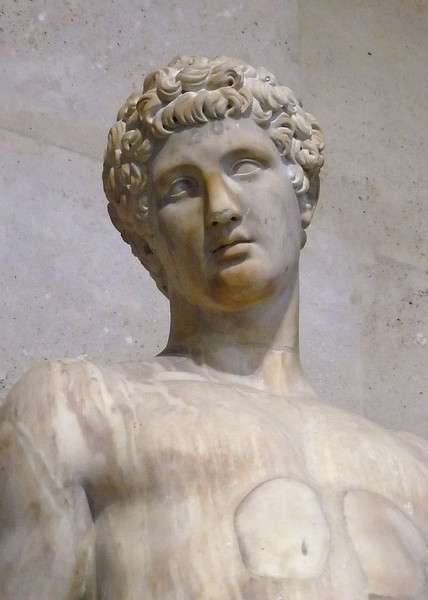
The myth of Adonis is a legendary love story that combines tragedy and death on the one hand, and the joy of coming back to life on the other. The story of the impossibly handsome Adonis and his lover the goddess Aphrodite originally dates back to the ancient civilizations of the Near East.
It was popular among the Canaanites, and very well-known to the people of Mesopotamia and Egypt as well, though referred to by different names in each civilization.
It is the legend of the god of beauty who faced death when he was young but came back to life for the sake of his beloved Aphrodite. The myth has been a source of great inspiration for many poets, artists and historians alike, leading to its widespread use as a major theme in literary and intellectual productions.
From The Canaanite Adon To The Greek Adonis
The god Adon was considered one of the most important Canaanite gods: he was the god of beauty, fertility and permanent renewal. The name itself, "Adon", means "The Lord" in Canaanite. In Greek mythology and the Hellenic world generally, he was called Adonis and became known by that name among those nations. Other adaptations of Adon in various civilizations include the Canaanite god Baal who was worshipped in Ugarit, and Tammuz or Dumuzi (meaning July) as he was known to the Babylonians. In Egypt, he was Osiris, the god of resurrection.
In addition to the god Adonis, the myth involves his everlasting mistress Astarte, the goddess of love and beauty. She was known as Aphrodite in Greek mythology and as Venus to the Romans. Their stories were so intertwined that Adonis' myth would be incomplete without mentioning Astarte and the legendary love story that brought them together.
The role that Cyprus played in transferring the myth of Adonis and Astarte from the Canaanite regions to the Greeks – and from the latter to the Romans – is a very significant one. However, perhaps due to the lack of Mesopotamian and Canaanite sources written about this legend (and often the ambiguity of such sources), the late Greek writings are the main references for this tale of eternal love. Hence, the myth is most popularly known as that of Adonis and Aphrodite, rather than Adon and Astarte.
Adonis in Greek Mythology
Based on the different Greek sources (such as Bion of Smyrna) and the other Roman references (like Ovid's Metamorphoses) a general consensus on the story of Adonis and Aphrodite is as follows:
A great king called Cinyras (in some sources known as Theias, the king of Assyria) had a daughter named Myrrha, who was very beautiful. The king used to boast about his daughter being more beautiful than Aphrodite, the goddess of love and beauty. When Aphrodite heard of this, she became angry and decided to retaliate. She used her son Eros, the god of desire and attraction, to make Myrrha fall in love with her father, and even deceived him into committing incest. When Cinyras discovered the trick, he swore to kill Myrrha, who in turn escaped from her father after realizing she was pregnant. Myrrha was ashamed and regretful of her heinous act, and pleaded to the gods to protect her. They answered her prayers by turning her into a Myrrh tree.
Nine months later, the Myrrh tree split off, and Adonis was born; he had inherited the beauty of his mother. When Aphrodite saw the boy, she was so amazed by his beauty that she decided to hide him from the rest of the goddesses, and entrusted him to Persephone, goddess of the underworld. Persephone began looking after the boy, and when he grew older and became more and more attractive, she fell in love with him.
A conflict then rose between Aphrodite and Persephone, who refused to give Adonis back to Aphrodite. Zeus, the king of the gods, intervened and ruled that Adonis to spend four months of the year with Persephone in Hades, the Underworld, then four months with Aphrodite, and the remaining four months however he wished. Because Adonis was so taken with the charm of Aphrodite, he devoted his free four months to her as well.
Adonis was well-known for his hunting skills, and in one of the hunting journeys in the Afqa Forest (near Byblos), Adonis was attacked by a wild boar and began bleeding in the hands of Aphrodite, who poured her magical nectar on his wounds. Although Adonis died, the blood blended with the nectar and flowed onto the soil where a flower sprouted from the ground, its scent the same as Aphrodite's nectar, and its color that of Adonis' blood – the Anemone flower. The blood reached the river and colored the water red, and the river became known as the "Adonis River" (currently known as Nahr Ibrahim or River Abraham), which is located in the Lebanese village of Afqa.
Worship of Adonis
Byblos was one of the main places in the ancient world that used to observe the rituals of Adonis and actually brought back the practice of these ceremonies and rites well into the early centuries of Christianity. The writings of Lucian of Samosata in the second century CE played a major role in shedding light on the rituals that were widely practiced by the people of Byblos. His book On The Syrian Goddess (De Dea Syria) recounts his visit to the village Afqa, where he explains what he encountered.
According to Lucian, the people of Byblos believed the wild boar incident that befell Adonis happened in their country. To commemorate this event, they would smite themselves each year, mourn, and celebrate religious rituals and orgies while a great mourning prevailed over the entire country. When their beating and bewailing stopped, they would celebrate the funeral of Adonis, as if he had died, and then the next day announce that he had returned to life and was sent to heaven.
Another one of the Byblos region's marvels is the river that runs from Mount Lebanon and flows into the sea. The River Adonis is said to lose its color every year and take on a bloody red hue, pouring into the sea and dyeing a large part of the beach red – a sign to the people of Byblos to start their time of mourning. It is believed that at this time of year, Adonis was wounded in Lebanon, and his blood went to the riverbed. One of the reasons given by Lucian – as told to him by one of Byblos' wise men – explaining why the river turns red at this time of the year is the strong wind blowing soil into the river. The soil of Lebanon (and of this region particularly) is known for its red color, which, when mixed with the river water, turns it purple.
The Immortal Myth
The popularity of the story of Adonis and his mistress Aphrodite led to a revival of its rituals in many other Phoenician cities as well. It also spread across to the ancient Greek, Hellenistic and Roman worlds, but with minor differences in adaptation, depending on the characteristics and features of each civilization. The essence of the legend, however, remains intact across all adaptations: a god of beauty and youth and his relationship with the goddess of love, along with the young god's death and return to life being a metaphor of nature's annual rebirth.
The myth of Adonis is closely related to the concept of vegetation and agricultural civilizations, such as Mesopotamia or the Canaanite areas (as the story originated in the Near East). The winter was a season of gloom and sadness for the inhabitants of these areas, whereas the spring and summer brought them the joy of new life. This myth is commonly believed to be an expression of its people's thinking, reflections, and psychological perceptions.
Remnants of Adonis worship are still present in this day and age among some nations of the Levant, Mesopotamia, and even Persia/Iran, where it is manifested as part of spring folklore celebrations, like the Feast of Nauroz.

